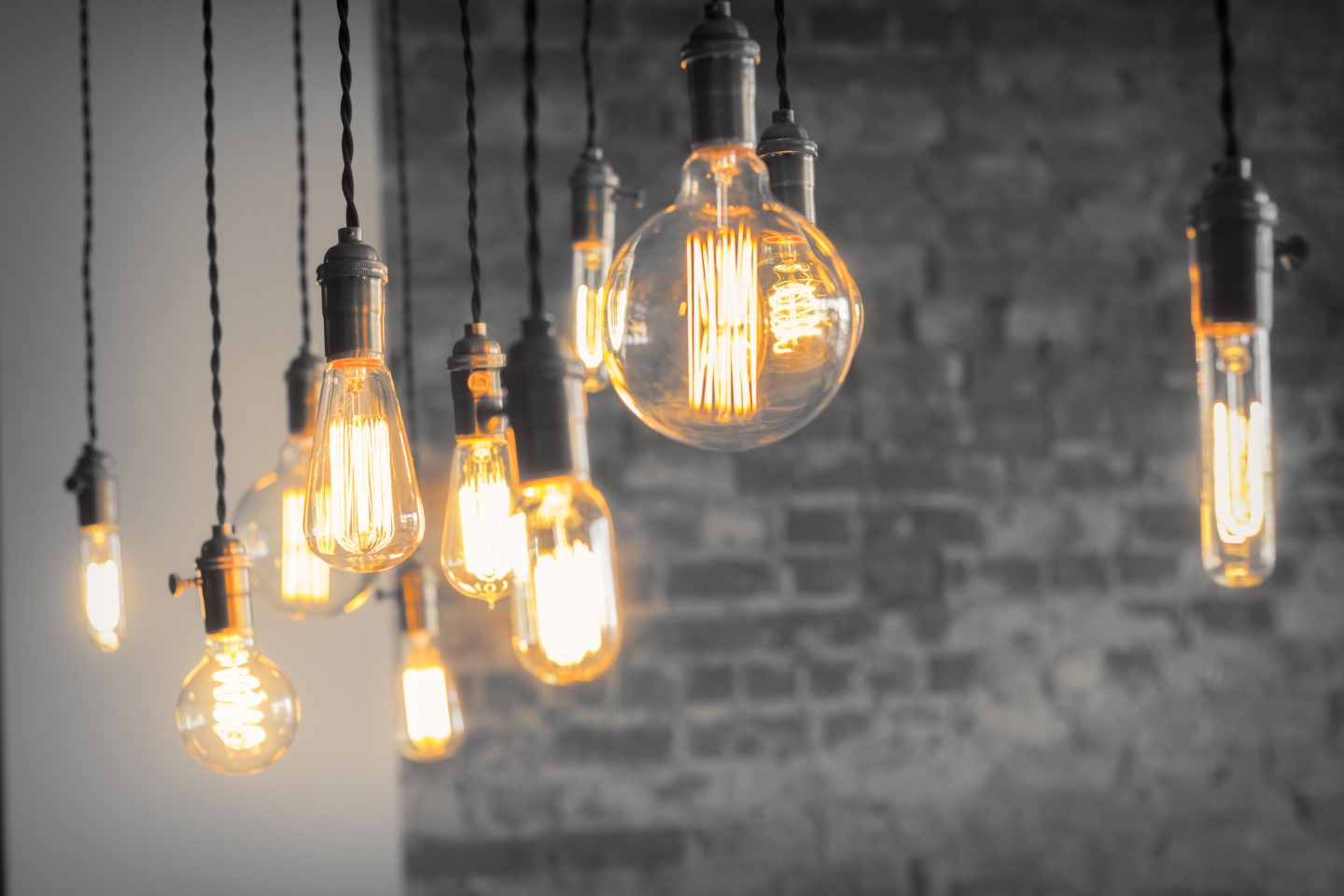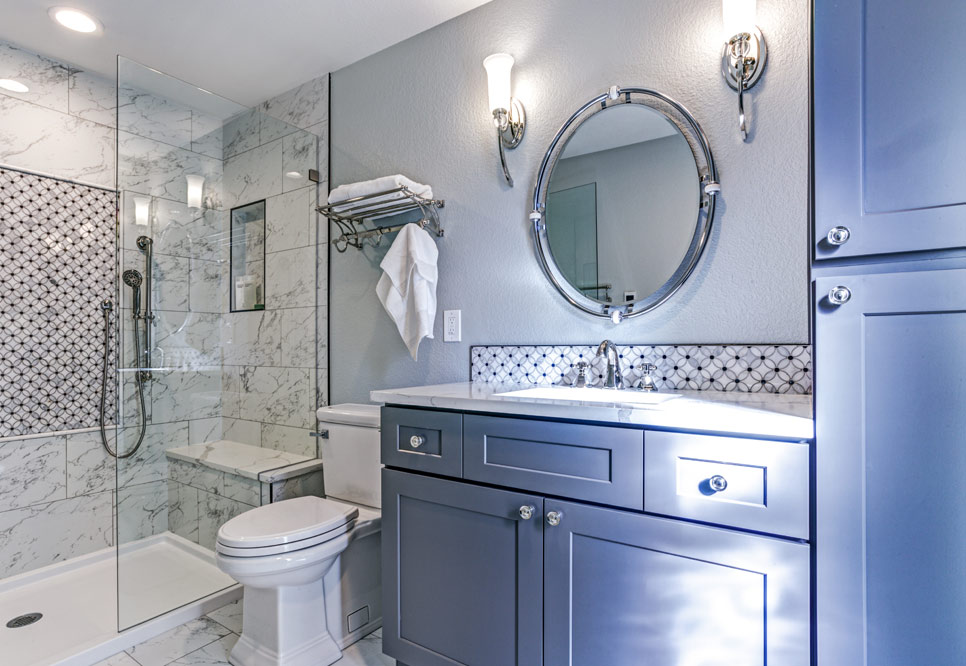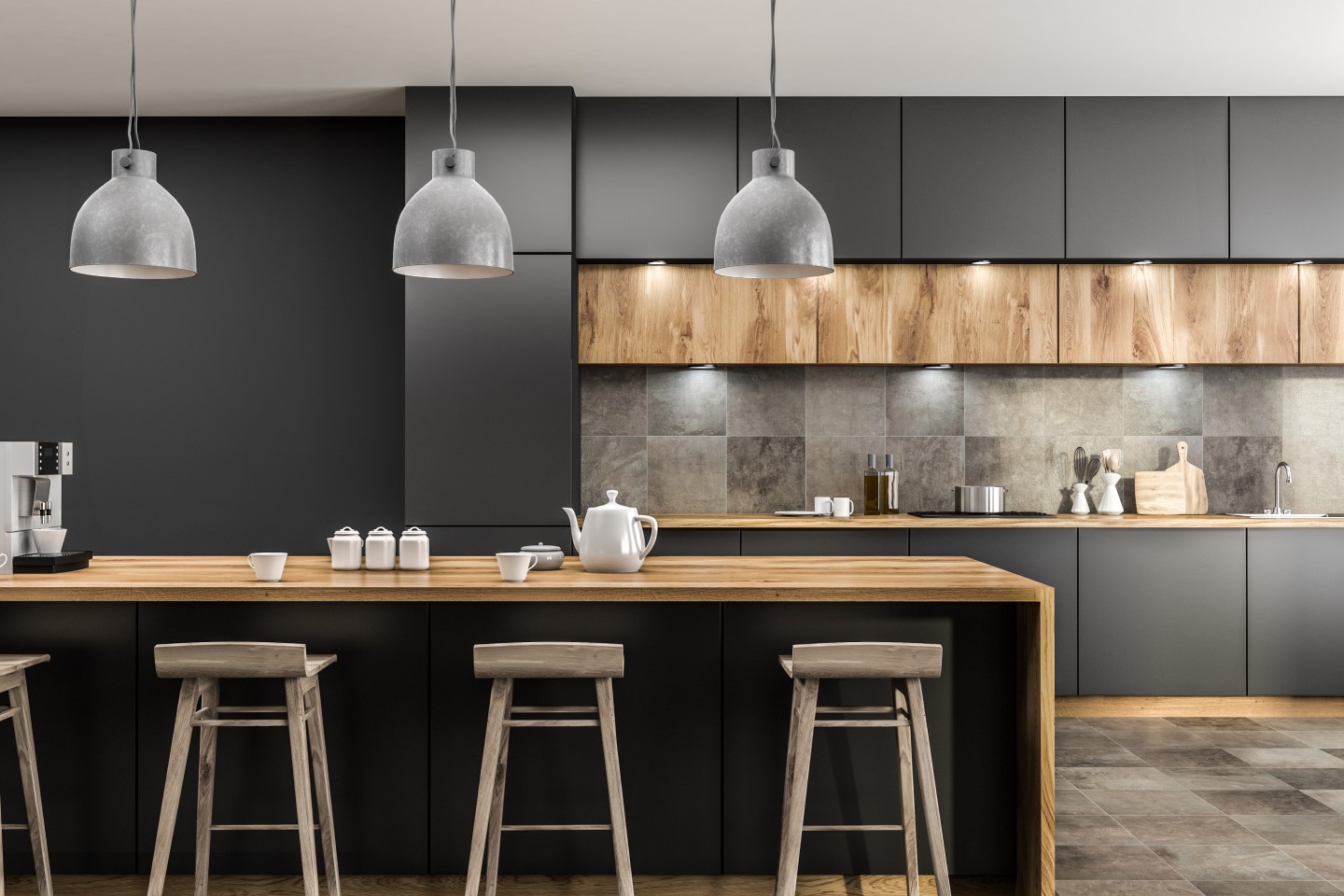IP ratings by room
How do you decide what LED light fixture or other electrical product is safe to install in different rooms in your home or business? It’s quite easy, just check the IP rating.
IP, or Ingress Protection ratings are used to define how effective an electrical enclosure is at keeping out foreign bodies like dirt and moisture as well as things like tools and parts of the body like fingers. The IP ratings are defined in international standard EN 60529 (British BS EN 60529:1992, European IEC 60509:1989).
The reason why these ratings were developed is that by having a universal system that clearly shows levels of protection, buyers and users can have confidence in the safety of electrical and mechanical goods in a range of different environments.
An IP rating gives you a far more specific marker that you would get with general terms like “waterproof” – while it’s good to know these can repel fluids, the precise degree of protection is uncertain.
IP rating system
When you are looking for suitable lighting solutions for various rooms around your home, the IP rating system is very good measure – lighting manufacturers will use the same IP rating numbers and definitions as any other enclosure.
At the same time you need to be aware of different zones in a room or area – knowing these will give you a good steer on exactly what IP ratings your lighting choices need to match. And the bathroom is one obvious area where you need to get the choice right.
An IP rating has two digits so you will see, for example IP65. The first number is the level of protection the enclosure will provide against intrusion – by dust, tools, or even small fingers. The second digit gives you a measure of how effectively the product will keep out water and other fluids.
IP20 is a very common rating for lights and you can be assured that a product with this label can be installed in many indoor rooms. The digit 2 means that nothing over 12mm can enter, while the 0 digit advises that there is no water-ingress protection.

Lights without IP rating
It’s true that a lot of indoor lights won’t have an IP rating, which is simply a result of the manufacturer deciding to contain costs by not putting the light through an expensive testing process, assuming that the fixture will be used in non-hazardous areas.
And very rarely, you might find an additional letter at the end of an IP rating, for example, IP65M. This piece of extra information shows a certified resistance to specific materials or hazards like oil or high voltages. It can also indicate that the enclosure has been tested in a specific environment like flowing water.
What do all the IP ratings mean?
First IP number (ingress)
1 (or X): Not rated for protection against ingress of this type. No special protection.
2 Protection from hands etc. but not deliberate access and from solid objects greater than 50mm diameter.
3 Protection against fingers or other objects no bigger than 80mm long and 12mm in diameter, e.g. accidental finger contact.
4 Protection from entry by tools, wires etc., with a diameter of 2.5 mm or more.
5 Protection against solid objects larger than 1mm, for example, wires, nails, screws, larger insects and other potentially invasive small objects such as tools.
6 Partial protection against dust that may harm equipment.
7 Full protection against dust and other airborne elements.
Second IP number (moisture protection)
1. or X means no protection.
2. Protection against falling droplets, e.g. condensation. No damage or interrupted functioning of components when the product is vertical.
3. Protection against water droplets deflected up to 15° from vertical
4. Protected against spray up to 60° from vertical.
5. Protected against water splashes in all directions. Minimum 10-minute test with oscillating spray – limited ingress with no harmful effects.
6. Protection against low-pressure jets (6.3 mm) of directed water from all angles with limited ingress permitted.
7. Protection against direct high pressure jets.
8. Protection against full immersion for up to 30 minutes at depths between 15 cm and 1 metre – limited ingress permitted.
9. Protection against extended immersion under higher pressures. Precise parameters set by manufacturer, with additional factors like temperature fluctuations and flow rates, depending on equipment type.
The higher numbers will nearly always be in specific commercial environments but for the home and standard businesses, it’s relatively easy to see what IP rating will be useful. Let’s take the bathroom as an example, not least because there’s a lot of moisture present.
What are bathroom zones?
This is where the idea of zones is very useful in selecting the ideal lighting or other electrical product with the right IP rating. Zones in a bathroom are areas where the fitting has to provide safety through a degree of protection against water and the zone number will indicate how much water will probably be present. The lower the zone number, the higher the IP rating needs to be.
The type of product that requires an IP rating in the bathroom would be lighting or extractor fan fitted on the wall or ceiling. It’s essential for you to know the minimum rating required so that the electrics are fitted safely and legally.

IP ratings for the bathroom
Zone 0 – inside the bath or shower. Any fitting used must be low voltage – max 12V – and rated at least IP67 (total immersion proof).
Zone 1 – above the bath to a height of 2.25m from the floor. IP65 rating recommended.
Zone 2 – area extending 0.6m beyond the perimeter of the bath/shower and to a height of 2.25m from the floor. IP44 is required. The area around a wash basin, a 60cm radius of any tap, should be in this zone.
Zone 3 – anywhere outside zones 0, 1, and 2, where no water jet would be used. No IP rating is required. If jets are used for cleaning in zones 1, 2 and 3, minimum IP65 fittings should be used.
We can take an LED downlight as an example. To find the best IP rating, you would need to consider factors like the extent of condensation, the potential for a shower head to become unseated and then spraying water across a wide area, or a water pipe fracture.
For example, IP44 is protected against penetration of solid objects up over 1mm and from splashes of water. An IP67 light fixture, meanwhile, is completely dust tight and can withstand temporary water immersion. Only IP68 rated bathroom lighting and electricals are water resistant against long periods of immersion.
IP ratings for the kitchen
You will find that it is not usually necessary to use IP rated kitchen ceiling spotlights but it’s wise to choose light fittings with IP20 rating in areas like cabinets, just for a bit of additional peace-of-mind. And if you have fittings near the sink or other water sources, then greater IP protection would be advised.

IP ratings for hallway living room and bedroom
It’s very unlikely that your hallway, living room or bedroom will suffer from a lot of moisture or dust so an IP-rated light fitting would not be necessary. If you need an exterior light, then IP44 rating or above is recommended. For outdoor sockets and switches IP66 rated products are advised.
It’s always to best make sure any electrical work in the bathroom and other areas is carried out by a qualified electrician.